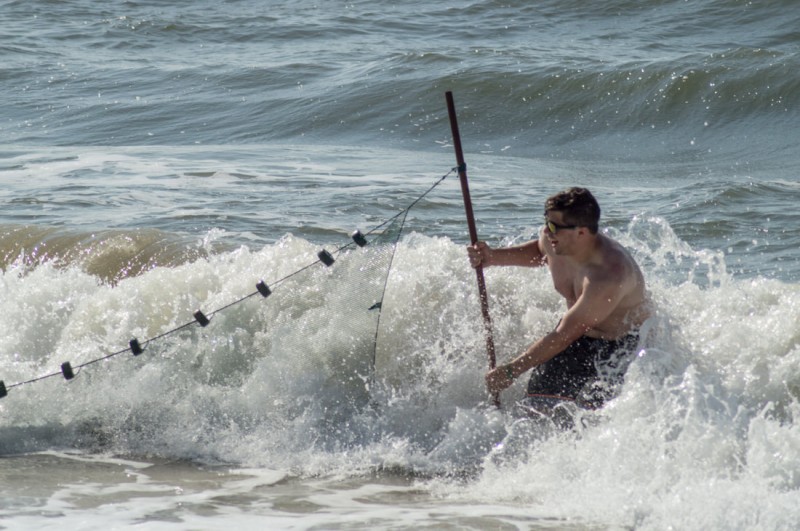At the shore: Binghamton becomes member institute of Chincoteague Bay Field Station
Located on Virginia’s Eastern Shore, the station will give students hands-on experience in coastal environments

The ocean surges into many fields of study — earth sciences and biology, environmental studies and more.
There’s just one problem: Binghamton University is inland.
Thanks to the efforts of Assistant Professor of Earth Sciences Adriane Lam and Biological Sciences lecturer Christopher Smyth, the University is now a member institute of the Chincoteague Bay Field Station on the Virginia coast. Membership brings a host of benefits for faculty and students, including summer courses in which students get the opportunity to explore coastal environments and ecosystems.
A nonprofit organization, the station is located on Wallops Island with access to the Chincoteague Island National Wildlife Refuge, famous for its wild ponies, and other parts of coastal Virginia. Member universities send faculty and students both to teach and take marine science courses there every summer. An added plus: The three-week courses include on-campus amenities such as housing and meals.
“These are really hands-on experiences; the students get completely immersed in the courses they are taking during that three weeks,” Smyth said. “They take field trips to a variety of coastal ecosystems along the barrier islands, including protected areas that they may not otherwise have access to.”
Smyth himself took courses at the station during his undergraduate years, and also worked as a summer camp counselor for the station’s K-12 programs. Prior to his arrival at Binghamton, he designed and taught a course there in 2019.
The courses will likely appeal to students in biological, earth and environmental sciences, although they also include general education classes with a wider appeal. The station also provides faculty and students the opportunity to strengthen ties with a consortium of other universities, potentially leading to research collaborations and partnerships.
Beginning in the summer of 2024, Binghamton faculty will also be able to offer three-week summer courses at the station. The field station offers an array of resources that faculty can use, including boats and other equipment commonly used in marine research. Currently, Smyth and Lam are developing shared field courses in biological and earth sciences for future spring semesters; these courses would include a trip to the research station during spring break.
Lam’s own research often involves fossil plankton and sediment cores from the sea floor, which can demonstrate environmental conditions and changes over time. The field station has the ability to take sediment cores, which students can then analyze either on site or back on campus, she said.
“Students can start thinking about climate change and its effects on these coastal communities in a time perspective, rather than just spatially,” she said.
The relationship between Binghamton and the field station makes sense in other ways, too.
“We are at the northern end of the Chesapeake Bay watershed, and it is almost a no-brainer to be affiliated with an organization that connects students with the coastal ecosystems that are directly impacted by the Chesapeake Bay watershed,” Smyth said. “Our students don’t often get to see the impact of climate change and sea-level rise in coastal communities here at Binghamton, but we can give them that firsthand knowledge and experience through these courses.”
